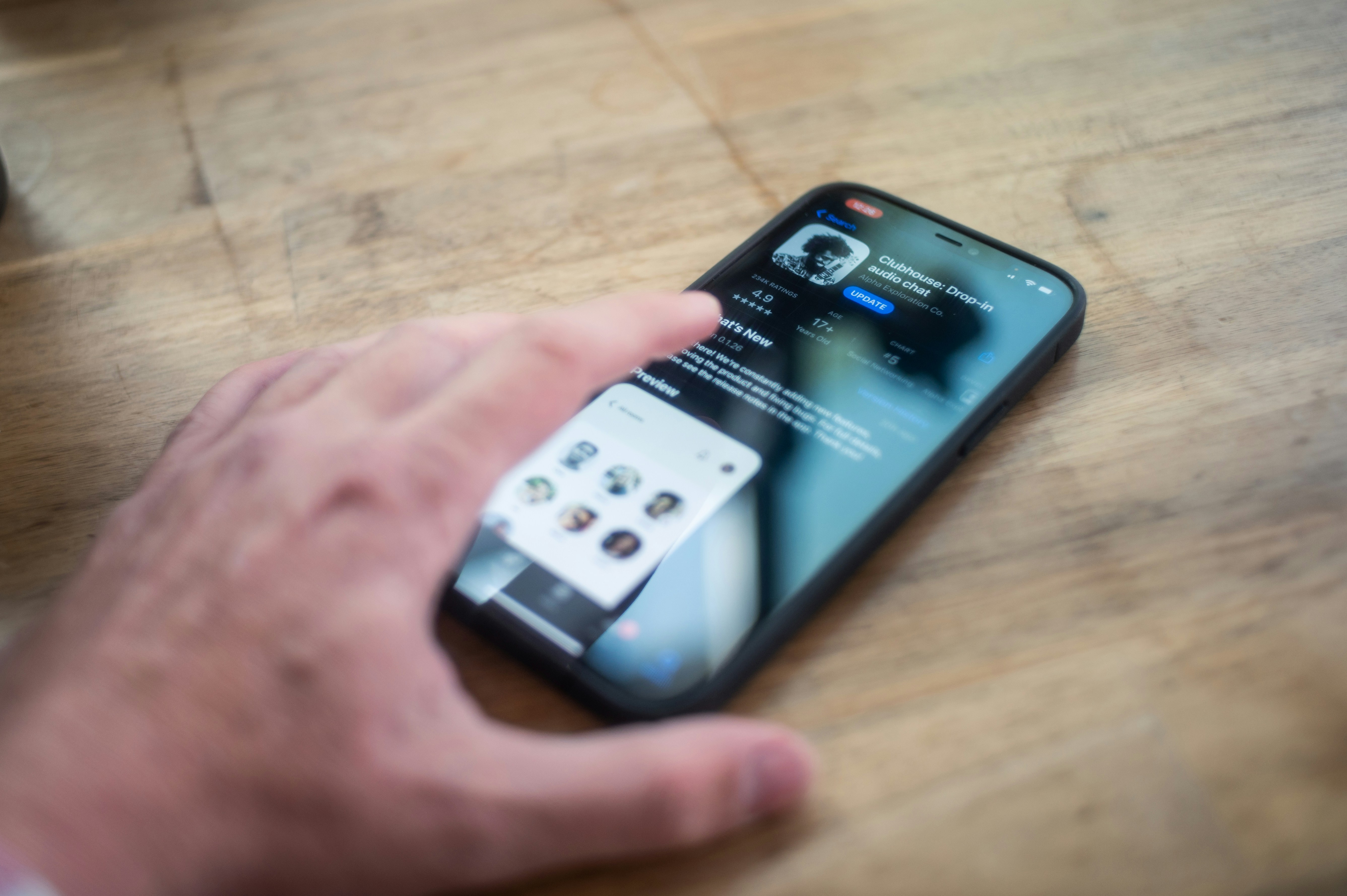What Is Two-Factor Authentication (2FA)?
Definition of Two-Factor Authentication
Two-Factor Authentication (2FA), also known as multi-factor authentication, is an extra layer of security that helps protect your social media accounts from being accessed by unauthorized individuals. It adds an additional step to the login process, ensuring that only you can access your account, even if someone else knows your password.
How Two-Factor Authentication Works
With 2FA enabled, after entering your username and password, you will be prompted to provide a second form of authentication. This can be something you know (such as a unique code sent to your phone or email), something you have (such as a physical security key or a fingerprint), or something you are (such as facial recognition or biometric data).
Types of Authentication Factors
There are three main types of authentication factors:
- Knowledge factor: This includes something you know, like a password or a PIN.
- Possession factor: This includes something you have, like a mobile phone or a physical security key.
- Inherence factor: This includes something you are, like a fingerprint or facial recognition.
By combining two or more of these factors, 2FA significantly enhances your social media account security by making it much more difficult for unauthorized individuals to gain access to your account, even if they have your password. So take the proactive step of enabling 2FA on your social media accounts today to better protect your personal information and maintain your online security.
This image is property of images.unsplash.com.
## Enhancing Social Media Account Security
Why Social Media Account Security is Important
Social media has become an integral part of our lives, connecting us with friends, family, and the world at large. However, with the increase in cyber threats, it is essential to prioritize the security of our social media accounts. Hackers and identity thieves are constantly finding new ways to exploit vulnerabilities and gain unauthorized access to our personal information. This is where Two-Factor Authentication (2FA) comes into play.
Benefits of Two-Factor Authentication for Social Media
Two-Factor Authentication provides an additional layer of security to your social media accounts, ensuring that only you can access them. By combining something you know (like a password) with something you have (like a unique code or fingerprint), 2FA verifies your identity beyond just a password. This greatly reduces the risk of unauthorized access and safeguards your personal information from falling into the wrong hands.
Popular Social Media Platforms Supporting 2FA
Many social media platforms now offer 2FA as an option to enhance account security. Platforms such as Facebook, Twitter, Instagram, and LinkedIn have made it easy for users to enable this feature. Simply navigate to your account settings and enable 2FA to protect your social media accounts further. By securing your accounts with 2FA, you can have peace of mind and enjoy the social media experience without worrying about potential security breaches.
What is Two-Factor Authentication (2FA), and how does it enhance your social media account security?
Two-Factor Authentication (2FA) is an additional layer of security that adds an extra step to the login process of your social media accounts, making it more difficult for hackers to gain unauthorized access. Instead of relying solely on your username and password, 2FA requires you to provide a second authentication method, typically a unique code, to verify your identity. This extra step ensures that even if your password is compromised, hackers would still need access to your personal device or email to log in.
Setting Up Two-Factor Authentication on Social Media
To enable 2FA on your social media accounts, follow these step-by-step instructions:
Step-by-Step Guide for Enabling Two-Factor Authentication
- Go to your Account Settings or Security settings.
- Look for the 2FA or Two-Factor Authentication option and click on it.
- Choose the authentication method you prefer, such as SMS text message, email, or authenticator app.
- Follow the prompts to set up the chosen authentication method.
- Test the 2FA process by logging out and trying to log back in, ensuring the additional authentication step is working.
Choosing the Right Authentication Method
It is crucial to choose the right authentication method for your social media accounts. SMS text messages and email codes are convenient but can be vulnerable to SIM hijacking or phishing attacks. Authenticator apps, such as Google Authenticator, provide a more secure option by generating unique codes directly on your device.
Best Practices for Securing Your Social Media Accounts
To enhance the security of your social media accounts even further, consider the following best practices:
- Enable 2FA on all your social media accounts.
- Use a strong, unique password for each account.
- Regularly update your passwords.
- Be cautious of suspicious links or messages.
- Use a reliable and up-to-date internet security software.
With 2FA implemented, you can boost the security of your social media accounts and reduce the risk of unauthorized access to your personal information and online presence.
This image is property of images.unsplash.com.
## Additional Security Measures to Consider
Strong and Unique Passwords
One of the most effective ways to enhance your social media account security is by using strong and unique passwords. Avoid using common passwords like “123456” or “password” as they are easy targets for hackers. Instead, come up with a combination of letters, numbers, and special characters that are unique to each platform. Ensure your passwords are at least 12 characters long and are not easily guessable.
Regularly Updating Software and Apps
Keeping your software and apps updated is another crucial step in safeguarding your social media accounts. Developers frequently release updates to address security vulnerabilities. By regularly updating your software and apps, you ensure that any known security flaws are patched up, reducing the risk of unauthorized access to your accounts.
Beware of Phishing Attacks
Phishing attacks are a common tactic used by hackers to gain access to your sensitive information. They often involve disguised emails or messages that appear legitimate but are actually designed to trick you into revealing your login credentials. Always double-check the sender’s email address or message content before clicking on any links or providing personal information. Be cautious of any unexpected requests for passwords or account details, as reputable platforms typically do not ask for this information without a valid reason.
Implementing these additional security measures, alongside two-factor authentication (2FA), will significantly bolster the security of your social media accounts, safeguarding your personal information from potential threats.
Two-Factor Authentication Apps
Introduction to Authentication Apps
Two-Factor Authentication (2FA) is a crucial security measure that adds an extra layer of protection to your social media accounts. By utilizing 2FA, you go beyond traditional passwords, making it significantly harder for hackers to gain unauthorized access. One effective method of implementing 2FA is by using authentication apps.
Authentication apps generate unique, time-sensitive codes that are required along with your password to log in to your social media accounts. These codes refresh every few seconds, providing an added level of security.
Benefits of Using Authentication Apps
Authentication apps offer several benefits. Firstly, they make it nearly impossible for hackers to access your social media accounts since they would need not only your login credentials but also your device to generate the code. Additionally, they eliminate the risk of a password being stolen or intercepted, as the generated codes are temporary and quickly expire. Moreover, authentication apps are easy to set up and use, providing a hassle-free solution to enhance your account security.
Examples of Popular Authentication Apps
There are numerous authentication apps available, each with its own unique features. Notable examples include Google Authenticator, Authy, and Microsoft Authenticator. These apps are widely trusted and supported by various social media platforms, ensuring compatibility across different accounts. Additionally, these apps often offer backup and recovery options, ensuring seamless access in case you change or lose your device.
By introducing authentication apps into your social media account security measures, you significantly reduce the risk of unauthorized access and stay one step ahead in protecting your valuable personal information.
This image is property of images.unsplash.com.
## SMS-Based Two-Factor Authentication
Two-Factor Authentication (2FA) has become an essential security measure to protect your social media accounts from unauthorized access. Among the various methods of implementing 2FA, SMS-Based 2FA is a commonly used approach that adds an extra layer of security to your login process.
Overview of SMS-Based 2FA
With SMS-Based 2FA, after entering your username and password, you receive a verification code via SMS on your registered phone number. You then enter this code to complete the login process. This additional step ensures that even if someone knows your password, they cannot access your account without the verification code sent to your phone.
Pros and Cons of SMS-Based 2FA
One of the advantages of SMS-Based 2FA is its ease of use. Most social media platforms support this method, making it convenient for users. On the other hand, one of the drawbacks is the reliance on mobile network coverage and phone reception. If you are in an area with weak signal, you might experience delays in receiving the verification code, which can cause inconvenience.
Security Concerns with SMS-Based 2FA
While SMS-Based 2FA provides an extra layer of security, it is not without its vulnerabilities. Hackers can intercept SMS messages, especially if they have access to your mobile network or exploit SIM swap attacks. Therefore, it is important to be vigilant and take additional precautions, such as regularly updating your passwords and enabling additional security measures offered by the social media platform, such as biometric authentication or app-based 2FA.
By implementing SMS-Based 2FA, you can significantly enhance the security of your social media accounts. However, it is crucial to stay informed about the latest security practices and be proactive in protecting your online presence.
Biometric Two-Factor Authentication
Two-Factor Authentication (2FA) is a crucial security measure that adds an extra layer of protection to your social media accounts. Typically, it requires not only your password but also a second form of verification to gain access. One of the most advanced forms of 2FA is biometric authentication, which uses unique physical or behavioral characteristics to verify your identity.
What is Biometric 2FA?
Biometric 2FA utilizes various biometric factors such as fingerprints, facial recognition, or voice recognition to validate your identity. These characteristics are unique to each individual, making it difficult for unauthorized persons to gain access to your accounts. By implementing biometric 2FA, you reduce the risk of someone accessing your social media without your knowledge or permission.
Biometric Factors Used in Authentication
Different biometric factors can be used in the authentication process. For instance, fingerprints are commonly employed due to their distinctiveness and ease of capture. Facial recognition analyzes facial features, while voice recognition examines speech patterns for identification purposes. These technologies ensure that only you can access your social media accounts.
Advantages and Limitations of Biometric 2FA
One significant advantage of biometric 2FA is its convenience. Unlike traditional methods that require you to remember complex passwords, biometric authentication simplifies the process. It also provides an additional layer of security that is difficult to replicate or spoof. However, biometric 2FA does have limitations, such as false acceptances or rejections due to variations in readings. Furthermore, biometric data can be compromised if not properly secured.
Implementing biometric 2FA offers an enhanced level of security for your social media accounts. By using your unique biometric characteristics, this authentication method ensures that only you can access your personal information, protecting you from potential threats.
Hardware Tokens for 2FA
Introduction to Hardware Tokens
Hardware tokens are physical devices that provide an additional layer of security for your social media accounts. When enabled, two-factor authentication (2FA) requires you to provide not only your password but also a unique code generated by the hardware token to access your account. This adds an extra level of protection, as even if someone somehow obtains your password, they won’t be able to log in without the physical token.
Benefits of Using Hardware Tokens
Using hardware tokens for 2FA offers several benefits. Firstly, it significantly reduces the risk of unauthorized access to your social media accounts. Since the unique code generated by the token is required to log in, even if someone manages to obtain your password, they won’t be able to bypass this additional layer of security. Secondly, hardware tokens are compact and portable, making them convenient to carry around and use from anywhere. They also provide peace of mind, knowing that your social media accounts are effectively safeguarded against potential threats.
Drawbacks of Hardware Tokens
While hardware tokens offer enhanced security, they do have some drawbacks. One notable drawback is the possibility of losing or misplacing the physical device. If this happens, you may find yourself unable to log in to your social media accounts until you acquire a replacement token. Additionally, depending on the provider, hardware tokens may require an initial investment, such as purchasing the physical device itself. However, considering the added protection they provide, many users find the investment worthwhile.
Leveraging hardware tokens for two-factor authentication enhances the security of your social media accounts by requiring an additional unique code alongside your password. Despite potential drawbacks like the risk of losing the physical token, the benefits, including reduced risk of unauthorized access and peace of mind, make it an ideal choice for ensuring the safety of your online presence.
Backup Options for 2FA
Importance of Backup Options in 2FA
When it comes to securing your social media accounts, Two-Factor Authentication (2FA) plays a crucial role in strengthening your online defenses. By adding an extra layer of security, 2FA ensures that even if your password is compromised, unauthorized individuals will have a much harder time accessing your accounts. But what happens if you lose or can’t access the device that generates your 2FA codes?
Backup Methods for Two-Factor Authentication
To circumvent this potential problem, it is essential to set up backup options for your 2FA. Most social media platforms allow you to link multiple devices or accounts to your 2FA setup. This means that even if one device or account becomes inaccessible, you can still receive authentication codes on another device or through another account.
You can typically choose from various backup methods, such as using an alternate email address, setting up trusted contacts, or relying on backup codes. By diversifying your backup options, you ensure that you have alternative means to access your social media accounts and prevent being locked out.
Recovery Procedures for Lost or Inaccessible Devices
In case you do lose access to all of your backup options, social media platforms often have recovery procedures in place. These procedures usually involve verifying your identity through additional means, such as answering security questions or providing personal information. By going through these recovery procedures, you can regain access to your accounts and re-establish the security of your social media presence.
It is important to remember that having backup options and being familiar with the recovery procedures is essential in enhancing the security of your social media accounts. By taking these precautions, you can ensure that your accounts are protected even in the event of lost or inaccessible devices.
Challenges and Limitations of 2FA
User Adoption and Convenience
Two-Factor Authentication (2FA) is an extra layer of security that helps protect your social media accounts from unauthorized access. It requires you to verify your identity using two different factors: something you know (such as a password) and something you have (such as a unique code generated on your smartphone).
While 2FA greatly enhances your account security, there are some challenges and limitations associated with its implementation. One major challenge is user adoption. Some users may be resistant to enabling 2FA due to the inconvenience of having to go through an extra step to log in. However, it is crucial to understand that the added security outweighs this inconvenience.
Potential Security Risks
Although 2FA provides an extra layer of protection, it is not foolproof. Hackers may still find ways to bypass it. For instance, if a hacker gains access to your phone or intercepts your verification code, they can potentially log in to your account. It is important to secure your smartphone and regularly update your apps to minimize the risk.
Social Engineering Attacks and Workarounds
Another limitation of 2FA is that it may not protect against social engineering attacks. These attacks involve manipulating individuals into revealing their login credentials or verification codes. Attackers can employ various techniques, such as impersonating customer support or creating fake login pages, to trick users into providing sensitive information. It is essential to stay vigilant and be cautious when sharing personal information, even if you have 2FA enabled.
While 2FA enhances the security of your social media accounts, it is important to understand its challenges and limitations. User adoption and convenience, potential security risks, and social engineering attacks are factors that can affect the effectiveness of 2FA. By being aware of these limitations and taking necessary precautions, you can ensure maximum protection for your social media accounts.



